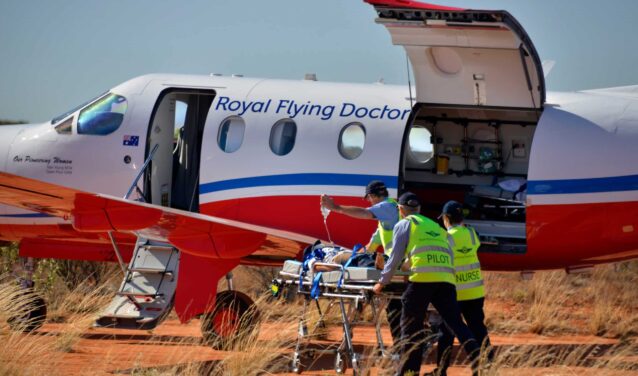When it comes to disaster relief operations, business aviation is an essential asset that is often overlooked. In this article, AEROAFFAIRES highlights the crucial role played by business aviation in critical situations. Whether for the rapid transport of medical personnel, the delivery of emergency supplies or the coordination of operations on the ground, business jets offer the flexibility, speed and efficiency that are essential for meeting the urgent needs of disaster-stricken areas. Find out how this valuable resource is helping to save lives and rebuild disaster-stricken communities. By providing vital assistance when every minute counts.
The advantages of business aviation in rescue operations.
Business aviation offers a number of essential advantages during disaster relief operations. These include :
Rapid response :
Business aviation enables a rapid response when an accident or a natural disaster occur. Their ability to take off quickly from regional airports or short airstrips allows them to reach anywhere in no time. This speed is crucial to saving lives and providing immediate assistance.
Logistical flexibility :
Business jets are designed to be versatile. As a result, they are able to reach areas that are difficult to access. They can land on shorter or unprepared runways, giving access to remote regions or those affected by damaged infrastructure. This logistical flexibility means that emergency services can be rapidly dispatched and people in danger can be evacuated.
Efficient transport of resources :
Did you know that private aviation offers the ability to transport personnel, equipment and essential supplies quickly and efficiently? This is known as an ambulance or EVASAN aircraft. Whether it’s medical equipment, rescue teams, food, water or other essential supplies, business jets can get these resources quickly to disaster-stricken areas.
Precise geographical coordinates :
Moreover, business jets are often equipped with cutting-edge technology, such as GPS. This enables them to pinpoint the exact location of the areas affected by the accident or natural disaster. This facilitates the coordination of relief efforts and enables the strategic use of available resources.
Extended flight range :
Business jets generally have a greater range than commercial aircraft. This allows them to cover longer distances with no stop. This is particularly useful during rescue operations in remote areas or when there are no operational bases nearby.
All these advantages help to save lives, provide immediate assistance and rapidly re-establish the conditions necessary for the resumption of activities in disaster-stricken areas.
Examples of the use of business aviation in emergency situations.
Business aviation plays an essential role in disaster relief operations. Here are a few concrete examples of business aviation’s successful involvement in emergency situations:
Transport of medical supplies and personnel :
When the earthquake struck Haiti in 2010, several business aviation companies were quick to mobilise their aircraft. They transported medical teams, medicines, food and equipment to the affected areas. These flights enabled humanitarian aid to be delivered quickly and medical care to be given to the injured.
Patient transport during the COVID 19 crisis:
During the COVID-19 crisis, private jets were used to transport patients in several countries. Here are a few concrete examples:
Evacuation of seriously ill patients :
In some cases, when patients with severe forms of COVID-19 required transfer to better-equipped health facilities, private jets were used for their evacuation. These aircraft are equipped with medical beds and advanced monitoring equipment. This ensured that patients remained stable during transport.
Transferring patients between regions :
In situations where regions were overloaded with COVID-19 patients, private jets were used to transfer patients to less affected regions or regions with additional hospital capacity. This relieved pressure on overcrowded hospitals and ensured adequate access to medical care.
Transport of medical supplies :
As well as transporting patients, business aviation has also been used to deliver essential medical supplies. These included masks, personal protective equipment (PPE), respirators and medicines, which were flown to the regions worst affected by COVID-19. Private jets offer rapid delivery and logistical flexibility, enabling these supplies to be transported quickly and efficiently.
Assistance with vaccination operations :
With the roll-out of the COVID-19 vaccination campaigns, some private jets were used to transport doses of vaccine to remote or underserved areas. This helped to speed up the vaccination process by ensuring rapid and secure distribution of the vaccines.
These examples illustrate how business aviation can be a valuable tool in disaster relief operations. Thanks to its flexibility, speed of response and ability to access remote areas, it makes a significant contribution to rescue and reconstruction efforts. As a result, affected communities get back on their feet more quickly.
The role of partnerships and coordination.
Partnerships and coordination between the business aviation industry, rescue organisations and the relevant authorities play an essential role in rescue operations. Here’s why this collaboration is important and how it can maximise the effectiveness of rescue operations:
Sharing resources :
Coordination between the business aviation industry, rescue organisations and the authorities enables available resources to be pooled (availability of crews, equipment, medical teams and, of course, aircraft). Business aviation companies can make their aircraft, crews, facilities and logistical expertise available. And relief organisations can provide medical expertise, response teams and supplies. This collaboration optimises the use of resources and enables a more effective and rapid response to the needs of those affected by a disaster.
Operations planning and coordination :
Effective coordination between the various players means that rescue operations can be better planned. The competent authorities can identify priority needs. They can also define the objectives and coordinate the actions of relief organisations and business aviation companies. This avoids duplication of effort, optimises the allocation of resources and ensures adequate coverage of the affected areas.
Exchange of information :
Co-ordination between the players involved means that relevant information can be shared quickly and seamlessly. Business aviation companies can provide information on the capacity of their aircraft, available landing strips and logistical constraints. Relief organisations can pass on information about priority medical needs, affected areas and specific challenges on the ground. This exchange of information enables informed decisions to be made, operations to be better planned and rapid response to changing needs.
Logistics and operational support :
Collaboration between business aviation and relief organisations facilitates logistics and operational support. Airlines provide maintenance, refuelling and flight coordination services. While relief organisations offer expertise in medical logistics, human resources management and coordination on the ground. This cooperation helps keep relief operations underway and ensures that aircraft and teams are ready to respond quickly.
In short, by working together, these players can act in a coordinated and efficient way to bring rapid and effective aid to the populations affected by a disaster.
AEROAFFAIRES is the ideal solution for rescue operations.
In conclusion, when it comes to emergency rescue operations, booking a private jet with AEROAFFAIRES can be a strategic decision. It maximises the efficiency and speed of operations. Thanks to their flexibility, speed and ability to access remote areas, private jets offer a reliable means of transport tailored to emergency situations.
By working closely with rescue organisations and the relevant authorities, AEROAFFAIRES is committed to facilitating rescue operations. We provide suitable aircraft, experienced crews and comprehensive logistics. By coordinating the various players involved, we can :
- optimise the use of resources
- plan operations efficiently
- share crucial information
- provide essential logistical support.
Booking a private jet with AEROAFFAIRES also offers peace of mind. Our company is renowned for its professionalism, expertise, safety and responsiveness. The aircraft we charter are carefully maintained and selected for rescue missions. The crews are trained to deal with emergency situations and safety protocols are strictly adhered to.
Need to book a private jet with AEROAFFAIRES for an emergency rescue operation? Our aviation experts are at your service 24/7 on + 33 (0) 1 44 09 91 82 or by e-mail: charter@aeroaffaires.com. You can also fill in our online quote form and receive a reply within two hours.






